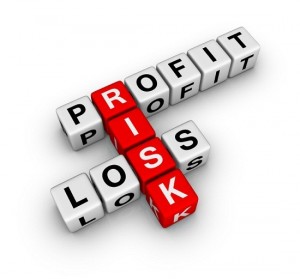Dave’s note: This is a reprint of a 2015 insight that seems to have struck a chord with investors and entrepreneurs. None of this advice has changed…
Let me tell you a few short hair–raising stories of entrepreneurs who have raised money and regretted it later. Here are some rules that entrepreneurs almost always ignore to their future peril.
Don’t take money from relatives who can’t afford to walk away without remorse.
Do take money from experienced family members only after you ask them if they are sure three or more separate times. By the third time you can be sure that they aren’t being overly emotional or feel they can’t say no. Also, if things go south, they are more likely to remember that you weren’t pushy and that you gave them three or more separate opportunities to say no.
three or more separate times. By the third time you can be sure that they aren’t being overly emotional or feel they can’t say no. Also, if things go south, they are more likely to remember that you weren’t pushy and that you gave them three or more separate opportunities to say no.
There’s a common expectation among entrepreneurs that seed money from family is great – letting close relatives in at the ground floor. The problem, of course, comes if the business fails. Some relatives believe that a family bond is an insurance policy, and that all investments or notes will always be repaid, no matter what the circumstance. Consider whether the family member being asked to invest has the capacity to walk away “happily” from a lost cause.
Don’t take money, especially start–up loans, from unsophisticated investors.
I was a co–lender and assumed the chairmanship of a young startup where the entrepreneur’s cousin also loaned money under the same terms. When the business failed, the cousin sued his own relative, me, my wife (who didn’t even know the names of the players), and even my family trust (an estate planning vehicle with no separate assets.) It took several times the value of the cousin’s loan in legal fees and settlement just to extradite my interests from a suit that had no merit – but would have cost hundreds of thousands more just to get to trial.
Do take loans from sophisticated investors only after you have tried everything to get them to purchase equity…
[Email readers, continue here…] …and always with clear wording on automatic loan extension if you are making progress but need additional time to meet the full set of goals.
Don’t talk yourself into a high valuation for the first round of financing for any reason…
…even if your hair is on fire and the idea is worth billions. This lesson is one that is not only hard to teach, but ignored by entrepreneurs on a regular basis. Early investors who don’t have the experience to compare value or ask tough questions accept the word of their entrepreneur as to valuation. Later investors will enter that picture only after insuring that valuation is reasonable and comparable to other opportunities for their money, but often will walk from a deal if the valuation for earlier investments was so high as to cause pain for that cohort. It’s just not worth the effort to argue with early investors when there are so many other deals calling for the sophisticated investor’s money.
Try not to take “dumb money” where the investor or lender supplies nothing other than cash.
 There are five attributes of a great investor (see my book, “Extending the Runway”), the money they offer at reasonable terms, their ability to guide you with advice about the context of your business plan in relation to the marketplace, their experience in the process of growing a company, their knowledge of how to best use corporate resource time, and finally, access to their extended relationships with others who can help speed growth. Those four additional assets are worth as much or more than the cash offered.
There are five attributes of a great investor (see my book, “Extending the Runway”), the money they offer at reasonable terms, their ability to guide you with advice about the context of your business plan in relation to the marketplace, their experience in the process of growing a company, their knowledge of how to best use corporate resource time, and finally, access to their extended relationships with others who can help speed growth. Those four additional assets are worth as much or more than the cash offered.
Don’t walk away from rejection by experienced investors thinking that they are stupid or just don’t get it.
Most of us in this world of early-stage investing have seen thousands of proposals, good and bad. Even if we don’t seem to get your brilliant idea and buy into its value, we may be comparing it to previous lost investments or industry experiences far beyond yours.
Do ask three sets of progressively deeper questions to get down to the heart of why they didn’t invest.
Every contact should be a learning experience. And those with sophisticated investors are doubly valuable. A well–phrased ‘no’ could well be a step toward a correction of course and a later ‘yes.’


 So, celebrate your exit by reaching out to as many of those who’ve helped along the way as you can. Close this chapter of your life on the highest note possible. Take a long breath. Then do as all good entrepreneurs do. Start dreaming of the next big idea. Take with you the best wishes from those in your past and build upon the education you received with this effort.
So, celebrate your exit by reaching out to as many of those who’ve helped along the way as you can. Close this chapter of your life on the highest note possible. Take a long breath. Then do as all good entrepreneurs do. Start dreaming of the next big idea. Take with you the best wishes from those in your past and build upon the education you received with this effort. investors, including the entrepreneur or the founders. Especially when outside investors, venture capitalists or angels have put in substantial money, and the sales price is not enough to give them a reasonable return for the time and money invested, these investors can be – in a word – greedy.
investors, including the entrepreneur or the founders. Especially when outside investors, venture capitalists or angels have put in substantial money, and the sales price is not enough to give them a reasonable return for the time and money invested, these investors can be – in a word – greedy. could yield a starting value of eighty percent of the sales price due to the VCs (fifty percent invested plus accumulated dividends for ten years at six percent which equals thirty percent of the sale price) and then fifty percent of the remaining twenty percent after participation. The result is that the preferred shareholders would receive ninety percent of a sales price (nearly was double their investment), compared to the remaining ten percent shared by the founders and all others, including angel investors and option holder-employees. Ouch!
could yield a starting value of eighty percent of the sales price due to the VCs (fifty percent invested plus accumulated dividends for ten years at six percent which equals thirty percent of the sale price) and then fifty percent of the remaining twenty percent after participation. The result is that the preferred shareholders would receive ninety percent of a sales price (nearly was double their investment), compared to the remaining ten percent shared by the founders and all others, including angel investors and option holder-employees. Ouch! dispose of remaining assets, I have literally been the one to turn out the lights, carry out the documents, books and records to my car, and become the only remaining contact between the failed business and the investors, bankruptcy court, or creditors. I volunteered to do this several times when there was no-one else, even the founders, to do this. And these were emotional experiences to say the least.
dispose of remaining assets, I have literally been the one to turn out the lights, carry out the documents, books and records to my car, and become the only remaining contact between the failed business and the investors, bankruptcy court, or creditors. I volunteered to do this several times when there was no-one else, even the founders, to do this. And these were emotional experiences to say the least. I just helped an entrepreneur to consider reorganizing his young business from being a value-added reseller into a software and consulting company. It would not be handling the expensive hardware that is part of its required sale at all, other than to recommend alternatives and charge for coordinating the purchases of differing supplier products, oversee the installation. It could then charge for setting up, integrating, and training the company’s software, all because its customers would not know how to do any of these important tasks.
I just helped an entrepreneur to consider reorganizing his young business from being a value-added reseller into a software and consulting company. It would not be handling the expensive hardware that is part of its required sale at all, other than to recommend alternatives and charge for coordinating the purchases of differing supplier products, oversee the installation. It could then charge for setting up, integrating, and training the company’s software, all because its customers would not know how to do any of these important tasks. for one of the companies where he sits as board member. Jeff asked the question “Is there anything big or small, which is working better than you expected? Is there anywhere we could double down?”
for one of the companies where he sits as board member. Jeff asked the question “Is there anything big or small, which is working better than you expected? Is there anywhere we could double down?” Can we change our thought process, alter our marketing focus, take resources from other areas if needed, and double down to back up potential winners in the making? Most of us would track the increased revenues, look at those in the light of total revenue progress, and monitor the actuals against the budget. A visionary like Bezos might pivot to make the rising star a centerpiece of our focus, quickly adding resources to support it, and seeing how far we could push it to make an unexpected success.
Can we change our thought process, alter our marketing focus, take resources from other areas if needed, and double down to back up potential winners in the making? Most of us would track the increased revenues, look at those in the light of total revenue progress, and monitor the actuals against the budget. A visionary like Bezos might pivot to make the rising star a centerpiece of our focus, quickly adding resources to support it, and seeing how far we could push it to make an unexpected success. protection of its intellectual property. In fact, many corporations spend millions developing surrounding patents to form what is known as a “patent thicket,” much like Brer Rabbit jumped into to protect himself against his detractors in the briar patch. Investors like to see patents or patent applications as evidence of intellectual property value and barriers to entry.
protection of its intellectual property. In fact, many corporations spend millions developing surrounding patents to form what is known as a “patent thicket,” much like Brer Rabbit jumped into to protect himself against his detractors in the briar patch. Investors like to see patents or patent applications as evidence of intellectual property value and barriers to entry. we’d find ourselves digging into the intellectual property developed by the company over the years, just to refresh ourselves about what the intended use was back then and whether new developments or technologies might make these older ideas and patents relevant again.
we’d find ourselves digging into the intellectual property developed by the company over the years, just to refresh ourselves about what the intended use was back then and whether new developments or technologies might make these older ideas and patents relevant again.
 Here’s the argument:
Here’s the argument: planned for as well – natural disasters, sudden political or economic events that rattle the entire economy, and more. That discussion is for a future time. Here are risks you can address.
planned for as well – natural disasters, sudden political or economic events that rattle the entire economy, and more. That discussion is for a future time. Here are risks you can address. This consists of two separate risks. First: do you have a significant barrier to entry to keep competitors from undermining your effort? And second: does a competitor have a better story and product to compete effectively against your offering? Someone within your firm must be finely attuned to the changes in the subtle signs from competitors. These include having a current knowledge of competitors’ hiring practices, pricing strategy, and more.
This consists of two separate risks. First: do you have a significant barrier to entry to keep competitors from undermining your effort? And second: does a competitor have a better story and product to compete effectively against your offering? Someone within your firm must be finely attuned to the changes in the subtle signs from competitors. These include having a current knowledge of competitors’ hiring practices, pricing strategy, and more. are a small operation. But what if you need to repeat the process of positioning, selling, and supporting your product ten thousand or more times as often as you do today?
are a small operation. But what if you need to repeat the process of positioning, selling, and supporting your product ten thousand or more times as often as you do today? It is important – no it is urgent – that you solve these problems and know how to spot them coming in advance. To scale any company to a large size, you must know how to solve the problems of production, customer service, working capital needs and more in order to keep the company on the rails. The cost in lost efficiency, customer referrals, and corporate reputation is too high not to make this a priority for a growing business.
It is important – no it is urgent – that you solve these problems and know how to spot them coming in advance. To scale any company to a large size, you must know how to solve the problems of production, customer service, working capital needs and more in order to keep the company on the rails. The cost in lost efficiency, customer referrals, and corporate reputation is too high not to make this a priority for a growing business.